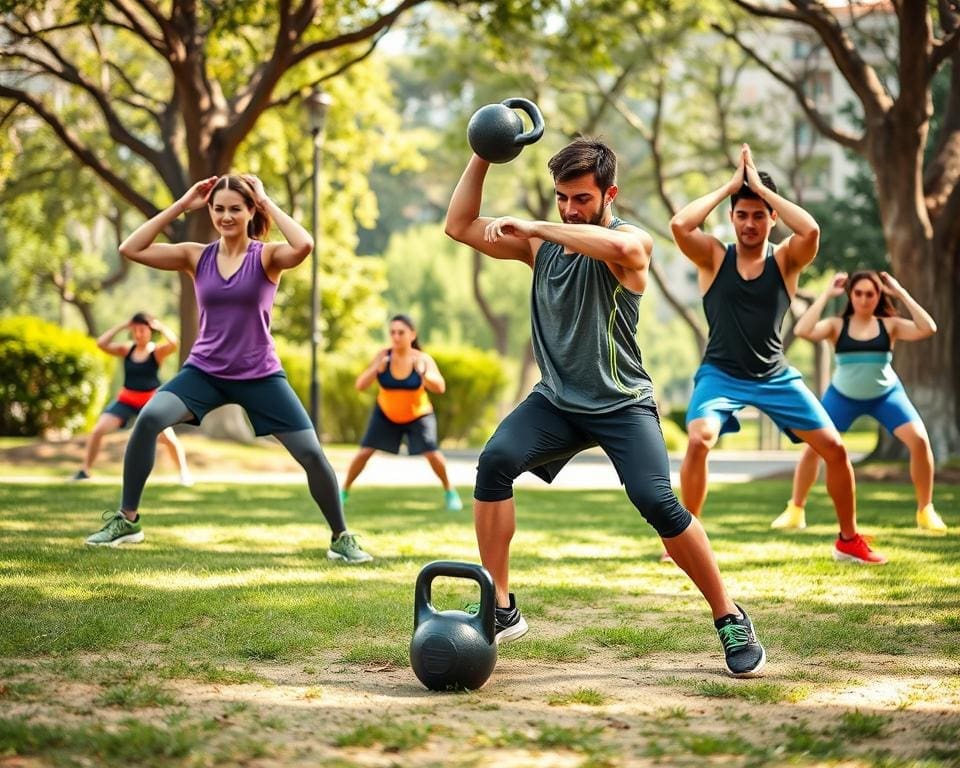In today’s fast-paced world, the need for fitness that translates into real-life strength is more important than ever. Functional fitness focuses on developing practical fitness through exercises that mimic everyday movements, allowing individuals to enhance their physical well-being and adapt to daily challenges. This holistic fitness approach not only improves strength but also increases stability and flexibility, ultimately elevating overall quality of life. By prioritising functional training, we align our fitness journey with the realities of life, empowering us to move through our days with confidence and resilience.
What is Functional Fitness?
Understanding functional fitness is essential for anyone looking to improve their physical capabilities and overall well-being. This exercise approach focuses on enhancing *real-life strength* by preparing the body for everyday activities through dynamic and multi-muscle movements.
Defining Functional Fitness
Functional fitness refers to a training methodology that emphasises movements mimicking everyday tasks. It integrates strength training with exercises that engage various muscle groups simultaneously. This holistic approach aims to improve overall performance, flexibility, and endurance in real-world scenarios, setting it apart from conventional training methods.
The Importance of Real-Life Strength
Real-life strength is crucial for performing daily tasks with ease, whether carrying groceries or climbing stairs. Engaging in functional fitness enhances the body’s performance in these activities, fostering improved coordination and balance. With enhanced real-life strength, individuals experience a reduced risk of injury and an increased quality of life, making these workouts invaluable for various age groups and fitness levels.
Differences Between Traditional and Functional Training
There are notable differences between training types that often confuse individuals new to fitness. Traditional strength training typically focuses on isolating specific muscle groups to build strength, often utilising machines. In contrast, functional fitness emphasises full-body movements that reflect typical daily activities, promoting greater muscle synergy and functional strength. This distinction highlights the importance of choosing a training regime aligned with personal goals and lifestyle needs.

Functional Fitness: Training for Real-Life Strength
A holistic approach to training encompasses various crucial elements that contribute to overall physical well-being. This technique focuses on enhancing not just strength, but also mobility, balance, and stability. Engaging in a well-rounded fitness regimen has shown significant improvements in joint health, flexibility, and functional capabilities.
Holistic Approach to Training
The holistic approach integrates physical conditioning with mental and emotional health, ensuring that individuals not only build strength but improve their quality of life. Incorporating comprehensive routines allows individuals to grow stronger in areas often neglected in traditional workouts. This includes functional exercises that engage multiple muscle groups, optimising movement patterns for everyday tasks.
Benefits of Functional Strength Training
The benefits of functional strength training are numerous, particularly when it comes to enhancing daily life and athletic performance. Key advantages include:
- Improved ability to perform everyday movements, such as lifting, bending, and reaching.
- Reduction in the risk of injuries through better coordination and stability.
- Enhanced sports performance by mimicking movements specific to various athletic disciplines.
Incorporating Everyday Movements
Incorporating everyday movements into functional fitness routines not only makes workouts relatable but also practical. Consider integrating the following actions into your training:
- Practising squats while lifting heavy grocery bags.
- Step-ups to navigate stairs more efficiently.
- Dynamic stretches before getting out of bed to prepare your body for daily activities.
These simple adjustments can transform mundane tasks into opportunities for strength training, emphasising a lifestyle of wellness.
Effective Functional Training Exercises
Incorporating effective functional training exercises into your fitness regime can significantly enhance your real-life strength and overall practical fitness. Exercises such as squats, deadlifts, and kettlebell swings are not just workouts; they mimic the movements you perform daily, making them highly relevant to your personal strength development. Squats strengthen your legs and core, improving your ability to lift, sit, and stand with ease. Deadlifts engage multiple muscle groups, boosting your functional strength by enhancing your coordination and stability during lifting actions.
To ensure the safety and effectiveness of these exercises, it’s essential to focus on proper technique. Begin with lighter weights if you’re new to functional strength training, gradually increasing the resistance as your confidence grows. Engage your core throughout each movement and maintain a firm, controlled posture to prevent injury. These simple yet effective adjustments can lead to tremendous benefits, allowing you to perform everyday tasks with greater ease and efficiency.
Designing a functional training programme can be straightforward. Aim to include a variety of exercises that target different muscle groups while allowing for balance and flexibility enhancements. For optimal results, consider structuring your workouts to feature a mix of strength-based exercises alongside mobility drills. With consistency and dedication, these effective functional training exercises will not only improve your fitness level but also empower you to face the challenges of daily life with greater strength and confidence.









